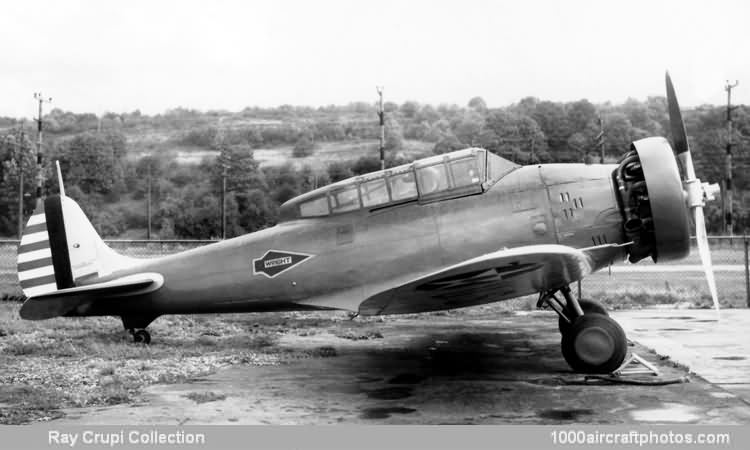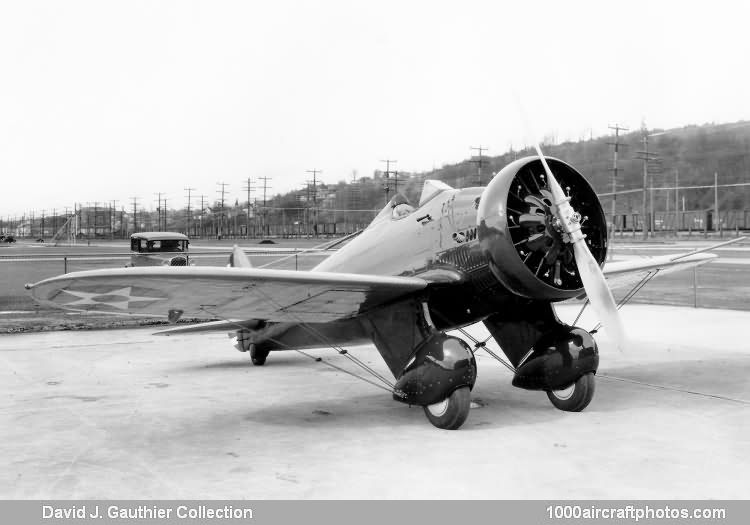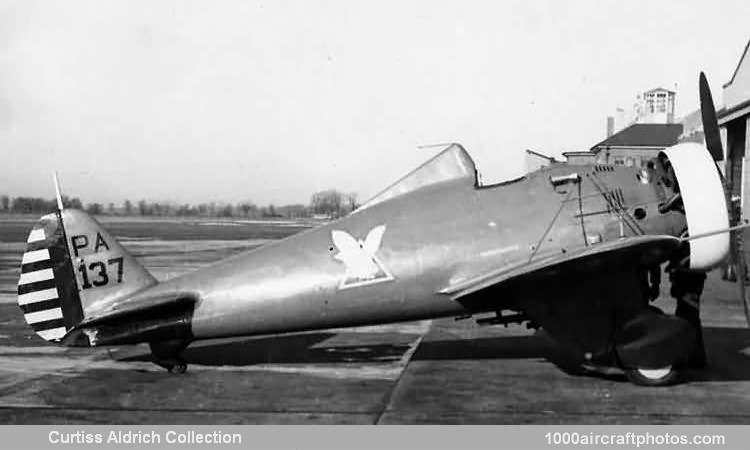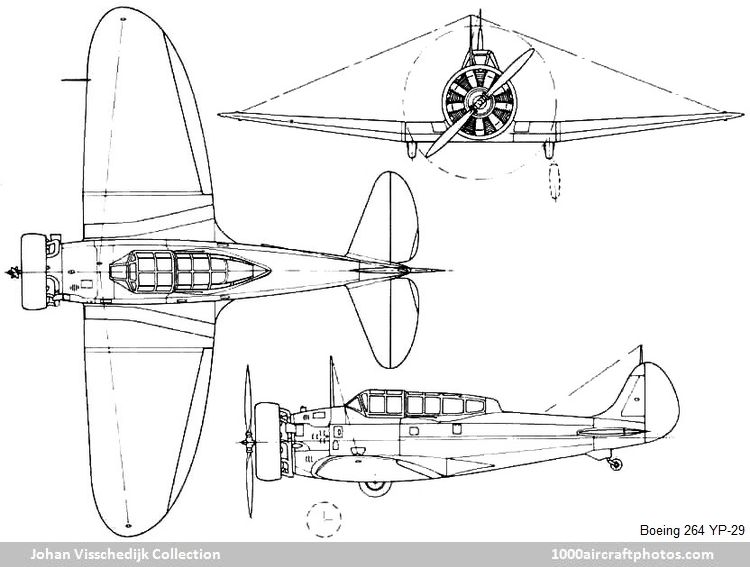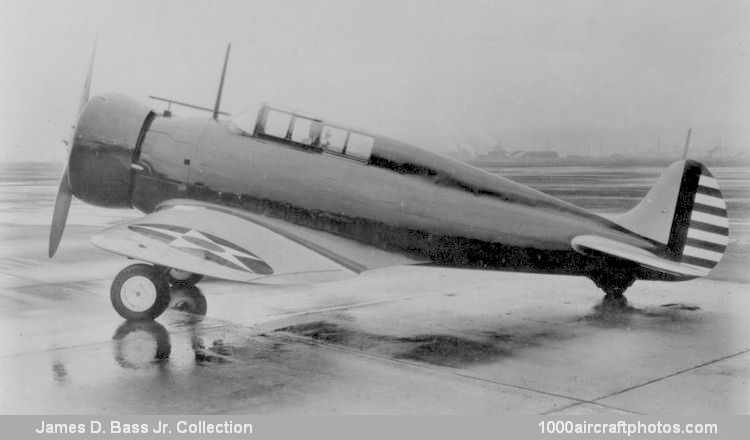12/31/2011. Remarks by
Johan Visschedijk: "The Model 264 was a new and more advanced fighter design developed between the appearance of the Model 248 XP-936 and the delivery of the Model 266 P-26A.
Boeing 266 P-26A (
Curtiss Aldrich Collection)
The new model was initiated as a private venture by Boeing in close collaboration with the USAAC, and was originally tested on a Bailment Contract under which the experimental military designation of XP-940 was assigned, and ended with the three aircraft (c/n 1941 to 1943) being bought by the USAAC as YP-29, YP-29A, and YP-29B, under the s/n 34-23 to 34-25 respectively.
In general design, the P-29 differed from the P-26 mainly in having full-cantilever wings, which carried a retractable landing gear similar to that originated on the Model 200 Monomail. Fuselage and tail construction was the same as the P-26 and the engines were the same as those on the production P-26A. The cleaner design resulted in an aircraft 16 mph (26 kmh) faster than the P-26A but the greater weight cut down the ceiling and maneuverability and cancelled an intended P-29A production order.
Boeing 264 XP-940 (
James D. Bass Jr. Collection)
The first of the three XP-940 aircraft completed (c/n 1942, actually the second in c/n sequence) was test flown on January 20, 1934, and was flown to Wright Field for USAAC testing on January 25. It featured a narrow cockpit enclosure that was essentially a transparent continuation of the pilot's oversize headrest to the windshield frame. This duplicated the installation of the USN Model 273
XF7B-1 which carried a later Boeing designation but had flown earlier. The XP-940 was returned to the factory in March for modification. Upon its return to the USAAC following factory modification in April 1934, the XP-940 was known as
YP-29A and eventually became P-29A. The narrow cockpit enclosure of the XP-940 was replaced by a standard open cockpit installation, but the distinctive long headrest that extended to the tail was retained. The full NACA cowling for the engine was replaced by a drag ring similar to that on the YP-29.
Because of military dissatisfaction with the narrow cockpit enclosures of the XF7B-1 and the XP-940, the second Model 264 to fly, designated YP-29 because of a purchase contract having been signed following testing of the XP-940, was completed with a large and roomy glasshouse enclosure around the cockpit. This satisfied the requirement for pilot protection at 250 mph (402 kmh) operating speeds. Because of the increased landing speed of the new monoplane design, the YP-29 was returned to the factory for the installation of wing flaps. Following service testing by the USAAC and Boeing, which included trials with controllable-pitch propellers, the service test designation was dropped and as plain P-29 the aircraft was sent to the
NACA facilities at Langley Field, Hampton, Virginia, for research purposes. On June 29, 1938 the aircraft was damaged beyond repair at Chanute Filed, Illinois.
The third Model 264 was completed as YP-29B with an open cockpit configuration similar to that of the YP-29A. The only outward differences were the one piece wing flap similar to that of the YP-29, an additional 1° of dihedral in the wing, and an oleo tail wheel assembly similar to that of the YP-29. The YP-29B was sent to Chanute Field, Rantoul, Illinois, for service testing."
